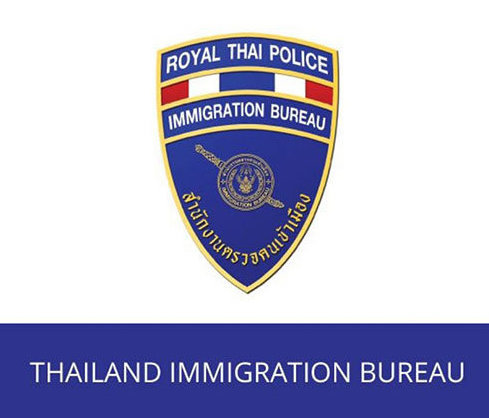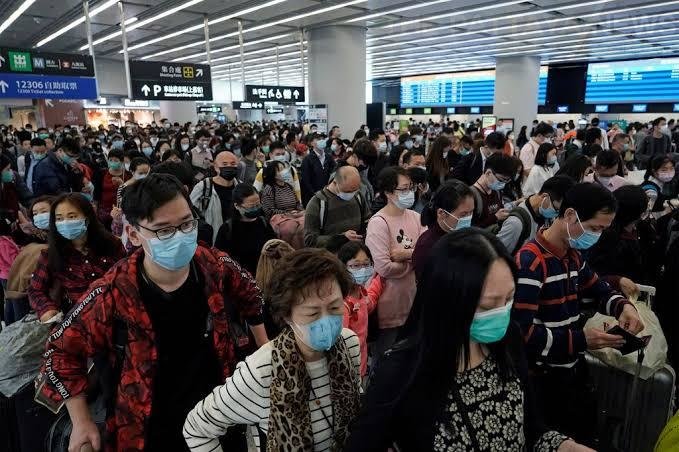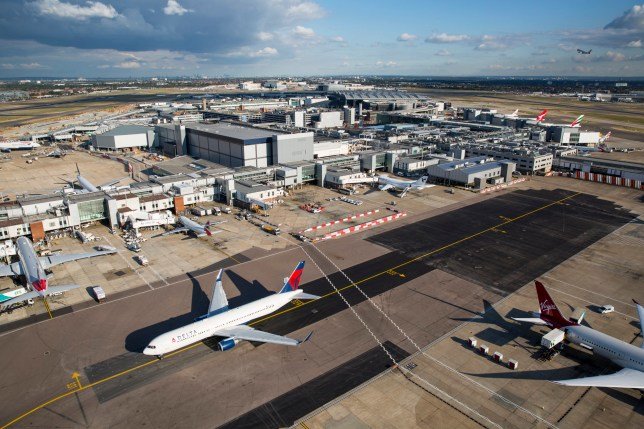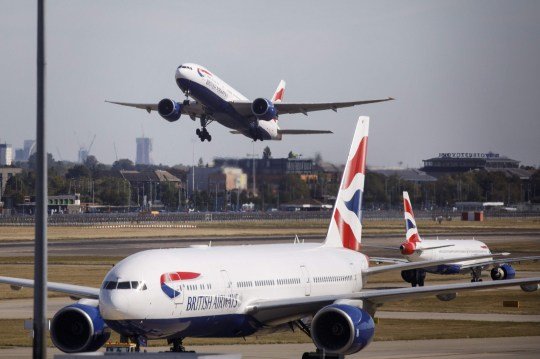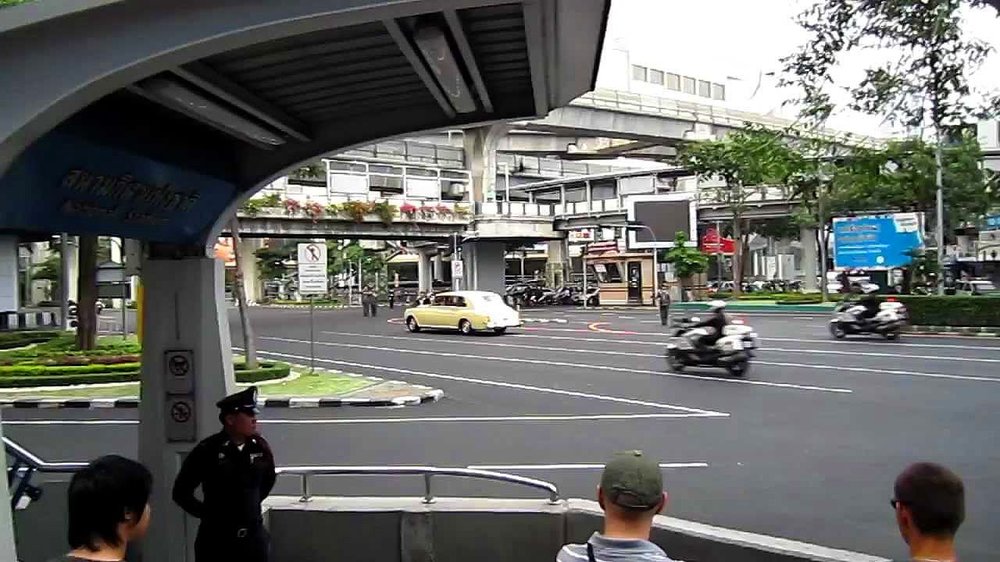-
Posts
163 -
Joined
-
Last visited
Content Type
Profiles
Forums
Blogs
Events
Everything posted by 247 NEWS
-
TM28: Thai immigration scraps requirement for foreigners to report when they stay away from home for 24 hours There is some good news for foreigners in Thailand. Thai immigration have all but scrapped the controversial TM28 change of address reporting requirement for foreigners. According to the new requirement, while TM28 is still listed, a long list of exceptions have been added, which for all intents and purposes means that almost no one is now required to submit a TM28 form. The list of exceptions, covered in sections 2.2 and 2.3 [here], includes just about every foreigner in Thailand, from diplomats and those performing official duties through to students, those working in Thailand, foreigners married to a Thai or who are a parent to a Thai child and those staying in Thailand for retirement. According to the immigration website, the regulation regarding TM28 is dated February 14 but came into effect on January 28. However, foreigners need to be aware that they are still required to inform immigration if they change address permanently. [This is covered in form TM27]. For example, if you rent a condo for say 6 months then you move to live in another condo, you need to inform immigration of your new address. The previous requirement stated that foreigners who had stayed in another province for more than 24 hours were required to inform their local immigration office when they returned. For example, if a foreigner who lives in Pattaya went and stayed at a friend’s place in Bangkok overnight, they would be required to inform immigration once they returned to Pattaya. The reality was TM28, which is listed under section 37 of the Immigration Act and has been a requirement since 1979, was seldom enforced by Thai immigration and hardly ever completed by foreigners after returning from an overnight stay elsewhere in Thailand. Many foreigners, including those who have lived in Thailand for a number of years, didn’t even know the requirement existed. At least that was the case until last year when TM28 briefly started being more strictly enforced by some immigration offices. This coincided with immigration also strictly enforcing TM30 - the requirement for hotels, guesthouses and property owners to report foreigners staying at their address. (TM30 often gets confused with TM28, with TM30 sometimes used as a kind of catch-all term to describe both but they are actually two separate requirements - and TM30 is still required.). The sudden enforcement of both TM28 and TM30 resulted in Thai immigration being on the receiving end of fierce criticism from the expat community and foreign business leaders in Thailand, who said TM28 was not just inconvenient but archaic, draconian and not fit for purpose today. A group of expats in Thailand even launched an online petition calling for the TM28 and TM30 to be abolished. And while the petition failed to reach its target for sign ups, it undoubtedly helped to bring the issue to the attention of senior immigration officials in Thailand. The subject also received widespread negative coverage in both Thai and English language media in Thailand and was also covered by international news outlets including the BBC and Nikkei Asian Review. The updated regulation regarding TM28 can be found on the Immigration website: https://www.immigration.go.th/read?content_id=5e468147cf638702b11f9cb9 thaivisa.com
-
Thailand confirms fifth case of China Coronavirus BANGKOK (Reuters) – Thailand on Friday confirmed its fifth case of the new coronavirus, a senior public health official said, in the second instance in which a patient was not detected at the airport before entering the country. “The patient is a 33-year-old woman from Wuhan on vacation,” Deputy Public Health Minister Sathit Patucha told Reuters, adding that she was under quarantine at Rajavithi hospital and her condition was improving. The woman arrived in Bangkok on Jan. 21 with her daughter and visited a private hospital complaining of a fever, coughing and muscle aches before being transferred to a government hospital on Jan. 23, Sathit said. Her daughter tested negative for the virus. A Thai woman who contracted the virus after spending the New Year in Wuhan was admitted to Nakhon Pathom hospital, 60 km (40 miles) west of Bangkok, on Jan. 15 and discharged on Friday after lab tests cleared her of the virus, the Public Health Ministry said in a statement. Thailand currently has two patients under quarantine for the virus. China has stepped up measures to contain the virus, which has killed 25 people and infected more than 800, with public transport suspensions in 10 cities, temples shutting, and the rapid construction of a new hospital to treat those infected. The Wuhan airport was closed on Jan. 23.
-
Temporary disruptions set to begin soon in Walking Street More disruptions are set to begin in Pattaya soon and this time to the world-famous Walking Street. Until now the work to install larger drainage pipes to try and curb seasonal flooding, plus remove the over-head cables and move them underground has been postponed. However, a decision has been made to start the work needed and this is set to begin imminently. The repair work will last for the next several months and business owners are now starting to brace themselves for the disruptions. Officials have said that business operators will be greatly affected as portions of the street will be under construction, however, hopefully people will understand that this short term disruption will be better in the long run. Construction is set to take about 3 months to complete.
-
Flights to Heathrow diverted after RAF demands use of airspace Flights were held or diverted after the RAF requested the use of Heathrow’s airspace (Picture: Getty) Dozens of flights to Heathrow Airport were diverted or delayed today after the RAF requested use of its airspace. At least five British Airways planes and one Virgin Atlantic flight were understood to have been diverted to other airports. The incident at Britain’s busiest airport in west London was ‘unplanned’ a spokesperson for Heathrow said. Some planes reportedly became ‘stacked’ in the skies around Greater London waiting for clearance to land. Passengers claimed they were told by pilots that their flights were being held due to a ‘security incident’ but the airport has denied this. Five British Airways planes and one Virgin Atlantic flight was understood to have been diverted to other airports (Picture: AFP) A spokesperson for Heathrow said: ‘Arrivals were paused briefly this morning due to an RAF request for an operational flight within part of Heathrow’s airspace. ‘Arrivals are now operating as normal.’ A Ministry of Defence spokesman confirmed it had coordinated a flight through the airspace. He added: ‘The RAF can confirm that a flight was completed this morning by one of our assets from RAF Northolt, this flight was coordinated with Heathrow ATC but had to extend by a few minutes to complete its sortie. ‘The minor delays caused to civilian air traffic are regretted.’
-
Vietjet Air launches direct route from Ho Chi Minh City to Pattaya VIETNAM (VOV)- The low-cost carrier Vietjet Air have recently opened a direct air route connecting Ho Chi Minh City with Pattaya in Thailand, with four return flights per week. The Ho Chi Minh City – Pattaya air route came into operation from December 23, with flights departing on Mondays, Wednesdays, Fridays, and Sundays.The duration of each flight is one hour and 30 minutes, with departures from Ho Chi Minh City taking place at 13:25 before arrival at U-tapao International Airport in Pattaya at 14:40. Return flights will see departures from U-tapao International Airport at 11:25 before arriving back in Ho Chi Minh City at 12:55. Flight VZ970 made its debut on December 23 after departing from U-tapao International Airport. Passengers onboard had the opportunity to enjoy a number of exciting performances on the flight and received several gifts courtesy of Vietjet Air. As a way of welcoming the latest route, the airline has offered a series of promotional tickets to customers priced from zero VND, excluding taxes and fees, over nine days between December 23 to December 31. Promotional tickets are only applicable to new routes between Ho Chi Minh City and Pattaya which take place between December 24 and March 31, 2020, except for periods such as holidays and the New Year. This promotion is on offer to those who purchase tickets via Vietjet Air’s offical website, the mobile application, and the “Booking” section on Facebook. Customers are able to pay with Vietjet Skyclub, Visa, Master, AMEX, JCB, KCP, UnionPay, and ATM cards of 34 major Vietnamese banks that have an Internet Banking registration. Following the opening of the new route, Vietjet Air bolsters their position as one of the largest operators between Vietnam and Thailand with a total of eight routes, including to Bangkok from Hanoi, Ho Chi Minh City, Da Nang, Hai Phong, and Da Lat, to Phuket and Chiang Mai from Ho Chi Minh City, in addition to the latest route between Ho Chi Minh City and Pattaya. The latest air service to Pattaya is expected to greatly contribute to increasing the number of tourists that travel between Vietnam’s southern provinces and the Rayong and Pattaya region, in addition to facilitating the international visitors’ travel through both Tan Son Nhat International Airport and U-Tapao International Airport.
-
New rules for Royal road motorcades around Thailand His Majesty King Maha Vajiralongkorn has expressed concern about the motorcades of Royal Family members inconveniencing public road users. Around Thailand, when a member of the Royal Family travels by road, the roads are routinely closed off and hundreds of police stationed along the well-planned route to hold off traffic until the motorcade has passed through. Now HM The King has ordered the Royal Thai Police to come up with new rules for the royal motorcades that would prioritise public traffic and cause less inconvenience. Whilst there has been no ground swell of angst from the public over the Royal motorcade road closures, His Majesty has been proactive in relieving any potential problems as more traffic heads out onto Thai roads every day. The Royal Thai Police have responded by announcing 10 new rules regarding royal motorcades… 1 No traffic lanes will be closed to facilitate royal motorcades in the future 2 On the motorcade route, traffic lanes will be divided into a motorcade lane while the rest will remain public lanes, using dividers as traffic cones, lighting signs, intelligent signs, etc. 3 The lanes on the opposite side of the motorcade route will remain open as usual. If the road does not have a street island, dividers such as traffic cones will be deployed to ensure public safety. 4 Traffic lanes merging into the motorcade route at a junction will be open as usual, using traffic cones to guide traffic flow 5 U-turn bridges and crossing bridges that fly over the motorcade route will be open as usual 6 At toll booths, only two rightmost lanes will be reserved for the motorcade, while the rest will be open to public vehicles. Traffic cones will be deployed on the left lanes to guide public vehicles into and out of the booths. 7 No one will be forced to change direction at junctions and crossroads along the motorcade routes. The public’s intention to use the roads in their original direction must be preserved as a priority 8 Traffic cones and lighting signs must be deployed in a suitable place that does not result in loss of traffic lanes or causes the public inconvenience 9 Consider employing appropriate public relations measures to notify road users of optimal routes with the highest convenience and safety 10 Police commanders of all levels must supervise the route administration in person and make sure to use suitable manners and speech when addressing the public to avoid causing them to feel being forced or limited in their transport routes. SOURCE: The Nation
-
Philippines warns of 'explosive eruption' after Taal Volcano spews ash near Manila. Manila, Philippines (CNN)Philippine authorities have urged a "total evacuation" of nearly half a million people near the capital Manila, after a volcano spewed ash up to nine miles (14 kilometers) into the air Sunday prompting warnings of a possible "explosive eruption." The Taal Volcano, about 37 miles (60 kilometers) south of the capital Manila on the island of Luzon, is one of the country's most active. Images from the scene on Monday showed streams of lava beginning to gush out the volcanic vent, the sky above still thick and dark with ash and steam. The Philippine Institute of Volcanology and Seismology (PHIVOLCS) has raised the alert level to four, meaning an "explosive eruption" could happen in the coming hours or days. Its highest alert level is five, indicating an eruption is taking place. People watch plumes of smoke and ash rise from Taal Volcano on January 12, 2020, in Tagaytay outside Manila, Philippines. In explosive eruptions, magma is fragmented and violently expelled from the volcano -- think of a soda can after being shaken -- as opposed to thick lava oozing out. Taal Volcano isn't actually very big -- but it's considered among the world's most dangerous, owing to the number of people that live in its immediate vicinity, said Erik Klemetti, a volcanologist at Denison University. PHIVOLCS has requested a "total evacuation" of everyone within a 17-kilometer (10.5 miles) radius around the volcano. This area, considered a volcanic danger zone, is home to more than 450,000 residents, according to the United Nations Office for the Coordination of Humanitarian Affairs. As of Monday, more than 16,400 people had sought shelter in temporary evacuation centers set up by the authorities. The total number of evacuees is likely to be higher, however, with many people choosing to stay with family members and relatives in other parts of the country. Federal authorities are helping the response and evacuation operation. The army sent 20 military vehicles and 120 personnel to help affected residents, and the secretary of national defense said helicopters were on standby to evacuate people. The defense secretary also urged residents near the eruption to evacuate, and not to hesitate in leaving their homes. Aid organizations like the Red Cross are assisting on the ground by sending rescue vehicles and supplies. Photos: Taal Volcano erupts in Philippines Residents prepare their boats to evacuate while the Taal Volcano erupts in Talisay, Philippines, on Monday, January 13. Tens of thousands were evacuated and tremors were felt in nearby villages amid an eruption of the country's second-most-active volcano near Manila. Residents within the immediate area are most at risk from the effects of a potential eruption, including a possible volcanic tsunami in the lake surrounding the volcano, according to PHIVOLCS. There are 10 cities and municipalities surrounding the volcano, some lying outside that evacuation radius -- and they are home to nearly 760,000 people, PHIVOLCS said. The lava now beginning to erupt is dangerous, Klemetti said, as it's creating "a big lava fountain" that could then spill into nearby towns. But volcanic ash is the biggest danger, said Joseph Michalski, director of the Earth and Planetary Science division at the University of Hong Kong. "The ash is what will kill you, not the lava," Michalski told CNN. "The ash flow from an exploding volcano can travel hundreds of kilometers an hour." Other threats include deadly toxic gases emitted from the eruption, and mud flows caused by ash mixing with water vapor in the atmosphere, Michalski added. A resident clears mud and ash in Tanauan town on January 13, 2020. If it erupts again, the ash -- which carries microscopic shards of glass -- could potentially be carried 100 kilometers (62 miles) or more, contaminating the air and water supplies in distant locations. More than 25 million people live within 100 kilometers of the volcano. "(The shards of glass) are hazardous to lungs," Michalski said. "You don't want stuff like that in your lungs. It can get lodged in there and make you quite ill." Michalski said it's too early to tell just how big the impending eruption could be -- Taal Volcano has a long history of frequent, small eruptions. However, it's also potentially more dangerous than other volcanoes because of its location on a lake -- the interaction of magma with water can make a volcanic eruption much more explosive. On Sunday, the volcanic ash spread as far as Quezon City north of Manila, prompting the suspension of all flights at the capital's international airport. A vehicle covered in ash mixed with rainwater after Taal Volcano erupted on January 12, 2020 in Talisay, Philippines. Photos from the aftermath on Sunday show ash mixing with rain, creating a thick black sludge that blanketed cars, streets, and homes in some towns. Ash is even heavier than snow, meaning excessive pile-ups, especially when mixed with rain, can cause roofs to collapse. Apart from immediate health hazards and structural damage, a potential eruption could also bring long-term consequences for the area's economy. The volcano is surrounded by a lake, which is a popular attraction -- meaning many of the towns in the vicinity are tourism hot spots. There are several amusement parks, lakeside resorts and yacht clubs within the 17-kilometer evacuation zone. The holiday town of Tagaytay, which lies close to the water's edge, is a popular getaway for Manila residents who often take boats onto the lake and hike up the volcano. Lightning strikes as a column of ash surrounds the crater of Taal Volcano as it erupts on January 12, 2020. The future of this tourism economy could depend on how destructive the potential second eruption is -- if it's big enough, it could wipe out the entire volcanic island in the middle of the lake, said Michalski. It could also serve a severe blow to the many farmers and fishermen who live in the area and rely on the lake and its surrounding land for their livelihoods. The volcano has seen powerful eruptions before -- one eruption in 1754 lasted six months, and its deadliest eruption took 1,335 lives in 1911. It erupted again in 1965, killing 190 people, and continued to have four more minor eruptions in the years since. Mariton Bornas, chief of volcano monitoring at PHIVOLCs, said that the agency had monitored tremors at the volcano as early as March 2019 -- but they were surprised by the rapid speed of the eruption on Sunday. CNN's Eric Cheung and Amanda Jackson contributed to this report.



